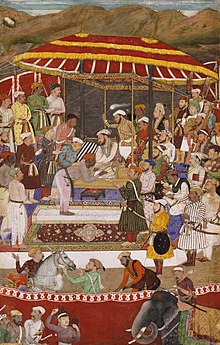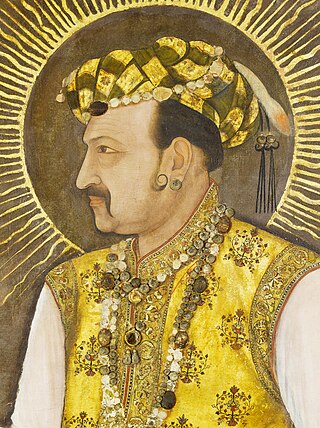
Nur-ud-Din Muhammad Salim, known by his imperial name Jahangir, was the fourth Mughal Emperor, who ruled from 1605 till his death in 1627.

Mirza Shahab-ud-Din Muhammad Khurram, also known as Shah Jahan I, was the fifth Mughal emperor, reigning from 1628 until 1658. During his reign, the Mughals reached the peak of their architectural and cultural achievements.
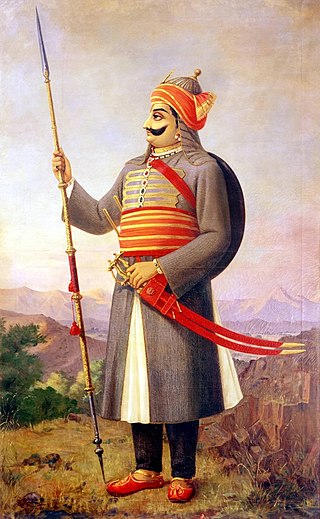
Pratap Singh I, popularly known as Maharana Pratap, was a king of Kingdom of Mewar, a princely state in north-western India in the present-day state of Rajasthan. He is notable for leading the Rajput resistance against the expansionist policy of the Mughal Emperor Akbar including the Battle of Haldighati.
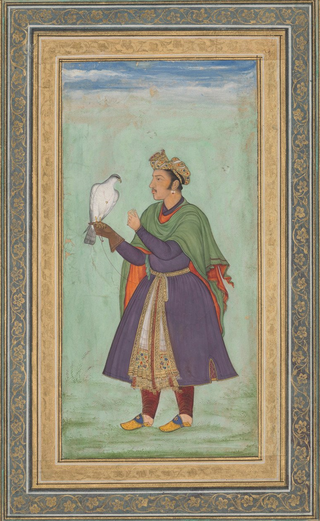
Khusrau Mirza was the eldest son of the Mughal Emperor Jahangir and his first wife, Shah Begum. The young prince displayed exceptional skills and wisdom and had the privilege to be groomed by the Mughal Emperor (Akbar) himself for the throne of the Mughal Empire. He turned out to be the most capable and qualified son of Jahangir but was befallen by an unfortunate destiny. Being Jahangir's eldest son, he was the heir-apparent to his father but Jahangir favoured his son Khurram Mirza as he held an animosity against Khusrau.

The Kingdom of Mewar, sometimes known as Udaipur State, was an independent kingdom in Rajputana region of India, ruled by the Sisodia dynasty. It was established around the 6th century by the minor rulers of the Nagada-Ahar region of Udaipur and later, in the 10th century, it transformed into an independent state under Rawal Bharttripatta II.

Mahabat Khan, born Zamana Beg, was a prominent Mughal general and statesman, perhaps best known for his coup against the Mughal Emperor Jahangir in 1626. He also served Subahdar of Malwa Subah from 1611 to 1623 and Bengal Subah during 1625–1626. He earned the title Khan-i-Khanan from emperor Shah Jahan.

Parviz Mirza was the second son of Mughal emperor Jahangir from his wife, Sahib Jamal. His daughter, Nadira Banu Begum, later became the wife of Dara Shikoh.

Maharana Amar Singh I, the Maharana ruler of Mewar Kingdom, was the eldest son and successor of Maharana Pratap I.He was the 14th Rana of Mewar,ruling from January 19, 1597 till his death on January 26, 1620.
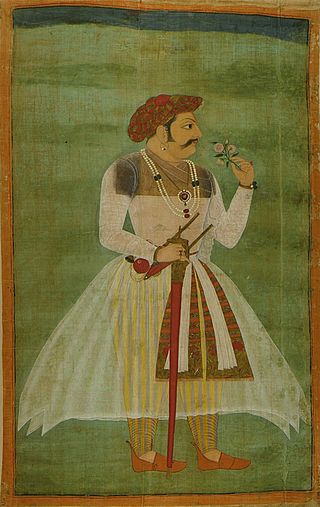
Maharana Jagat Singh I, was the Maharana of Mewar Kingdom in Rajputana, India. He was the son of Maharana Karan Singh II. Maharana Jagat Singh built a wall around the Chittor Fort. When Mughal Emperor Shah Jahan heard of it, he sent his noble wazir Sadullah Khan to invade Mewar because Shah Jahan thought that Jagat Singh broke the treaty that his father Jahangir made with Maharana Amar Singh I .The treaty had a clause that any Rana of Mewar cannot build any defence or safe wall around the fort. Maharana sent his messengers when Sadullah Khan reached the borders of Mewar, the misunderstanding was soon resolved and the Mughals turned back. Maharana Jagat Singh made a new treaty with Shah Jahan and demolished the wall that he built around the fort.
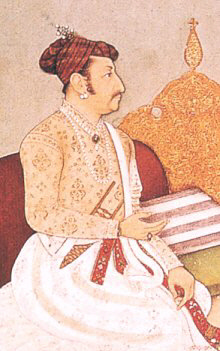
Gaj Singh Rathore ruled the Kingdom of Marwar as Raja, Gaj Singh I, from 7 September 1619 until his death.

Sawai Raja Soor Singh or Suraj Mal or Suraj Singh, was the ruler of the Rathore Kingdom of Marwar .His sister Manawati Deiji/Bilqis Makani was the consort of Mughal Emperor Jahangir and mother of his successor Mughal Emperor Shah Jahan.
Kandahari Begum was the first wife of the Mughal emperor Shah Jahan and the mother of his first child, Princess Parhez Banu Begum.
Saliha Banu Begum was the chief consort of Emperor Jahangir. She was the Padshah Begum for the most part of the reign of her emperor husband until her death in the year 1620.
Parhez Banu Begum was a Mughal princess, the first child and eldest daughter of Mughal emperor Shah Jahan from his first wife, Qandahari Begum. She was also the older half-sister of her father's successor, the sixth Mughal emperor Aurangzeb.

Khas Mahal, meaning "The exquisite one of the palace", was one of the chief wives of the Mughal emperor Jahangir.
Malika Jahan was a Jaisalmer princess, and wife of Mughal emperor Jahangir.
Raja Kishan Singh was the son of Mota Raja Udai Singh of Marwar and the founder of Kishangarh and the eponymous Kishangarh State.His sister Manawati Deiji was the chief consort of Mughal Emperor Jahangir and mother of his successor the fifth Mughal Emperor Shah Jahan.
Lizzat-un-Nissa Begum was a Mughal princess, the youngest daughter of Emperor Jahangir and his Rathore wife, Jagat Gosain. She was also the full sister of Emperor Shah Jahan.
After the mid-16th century, many Rajput rulers formed close ties with the Mughal emperors and served them in various capacities. It was because of the support of the Rajputs that Akbar was able to lay the foundation of the Mughal Empire in India. The vassals had their daughters and sisters married to the Mughal emperors and their princes. The successors of the Mughal emperor Akbar, the mothers of his son Jahangir and grandson Shah Jahan were Rajputs. The Sisodia Rajput family of Mewar made it an honor not to enter into matrimonial relations with the Mughals, and thus stood in contrast to all other Rajput clans. After this time, the marital relations between the Rajputs and the Mughals declined somewhat. Akbar's relations with the Rajputs began when he returned in 1561 from a visit by the Chisti Sufi Shaikh of Sikri, west of Agra. Then many Rajput princesses married Mughal emperor Akbar.
The Battle of Ranakpur (Ranpur) was fought between the Mewar and the Mughal Empire
